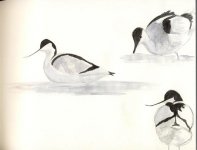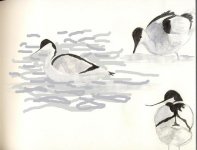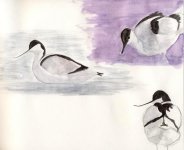Vectis Birder
Itchy feet
I am attempting some watercolour painting, of a Woodpigeon in the garden at home. I have seen the excellent w/colour feld sketches by the likes of Sczabolcs Kokay, Nick D, Tim W, and others and would like, if I can, to be able to emulate that degree of brilliance - getting a great impression of the bird without getting bogged down in too much detail. I love the field sketch type of painting, it's my favourite part of bird art.
I am finding with watercolours that the result is looking a little weak on the page - is a case of building the thing up as you go? If so how do you avoid the hard lines that often result?
Also, how not to make it look too one dimensional? Getting the depth and roundness isn't that easy.
I'll scan my efforts in later for critique/savaging/help.
I am finding with watercolours that the result is looking a little weak on the page - is a case of building the thing up as you go? If so how do you avoid the hard lines that often result?
Also, how not to make it look too one dimensional? Getting the depth and roundness isn't that easy.
I'll scan my efforts in later for critique/savaging/help.
Last edited:






